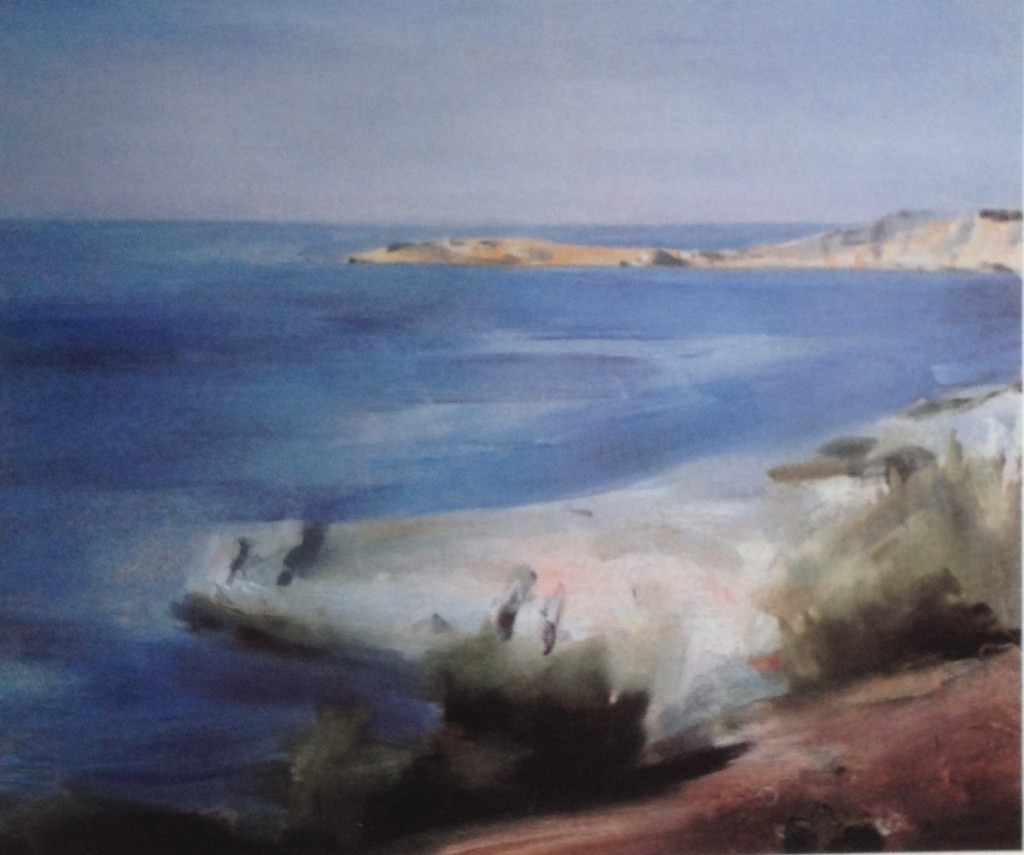Thoughts on Dickinson
This image comes from an exhibition catalog published by Tibor de Nagy gallery for a show of Edwin Dickinson’s work in 1996. It arrived last week after I found it online, in new condition, with several good color reproductions of his work, though not as many as I’d hoped. It includes an appreciation by the poet Mark Strand, whose writing about art has been included in a number of art books I’ve bought over the years:
Edwin Dickinson may be one of the least known and least appreciated twentieth-century masters. The reasons probably have to do with the reticence of his best paintings–the quick, improvisational ones he called “premier coups” or “first strikes.” These small, gestural canvases manage, with uncanny ease, to combine airiness and precision. In painting after painting we experience a rightness of scene, a simplicity and directness in suggesting, say, the haze of a summer’s day, or the damp dispersal of seaside light. There is a softness about his paintings that seems the visual correlative of affection, an immediacy that seems a form of surrender to the view at hand. Dickinson’s scrupulous attention to atmosphere, to the feel and prescence of light, to what is most ephemeral in our daily lives, give his paintings an elegiac cast. They are intimate depictions of nature at its most elusive and beguiling.
From the Brooklyn Rail:
Throughout his life, Dickinson credited (Charles W. Hawthorne, an underrated realist painter) with teaching him “That plane relationships (i.e., subtly shifting tonalities) are more representable through comparative value than through implications of contour.”
From the catalog:
Anyone who wishes to elucidate the art of Edwin Dickinson (1891-1978) is confronted by a stubborn paradox: the painter developed and mastered two apparently contrary modes of expression, and skillfully mediated between them for more than fifty years. Dickinson’s first way of working was manifested in large visionary canvases, for which a painstaking understanding of three-dimensional design was demanded. Created from memory and imagination, each elaborate painting could take years to construct, and the artist never deemed any of them completed to his satisfaction. Dickinson’s second principal means of expression was manifested in several hundred landscapes distinguished by their air of spontaneity, liquid fracture, and vivacious handling. Painting directly from nature and out of doors, these canvases were created au premier coup, mainly in Western New York, Cape Code and rural France, each in one sitting. After a session of three or four hours, Dickinson considered a picture done and walked away from it . . .

Comments are currently closed.